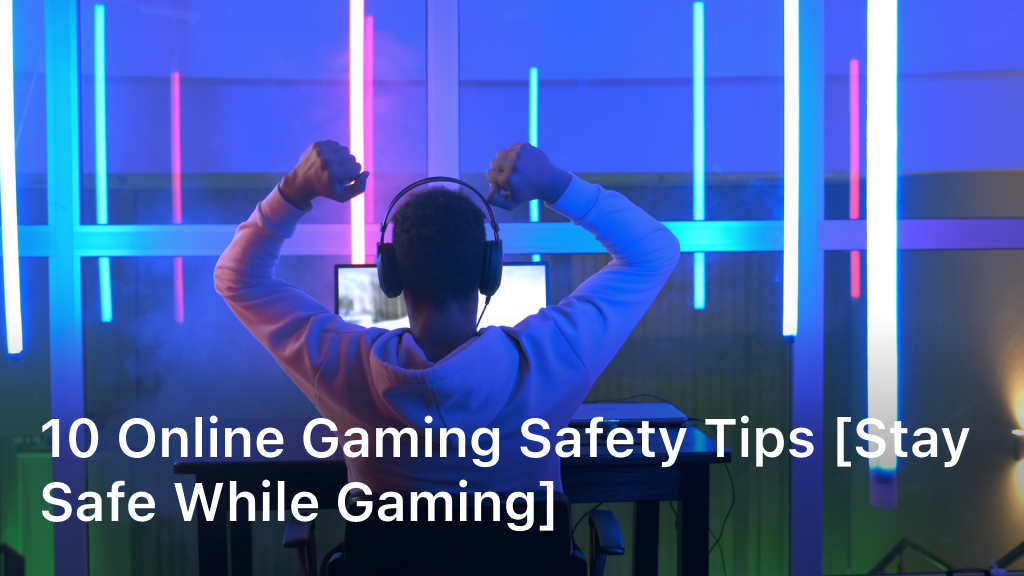How to Disable a VPN: Quick and Easy Steps
Learning how to disable a VPN is key, especially when I need to turn it off for certain tasks. Whether it’s for accessing blocked content, playing games, or getting faster internet, knowing how to disable a VPN improves my online life. Most of the time, disabling my VPN is as simple as clicking the same button used to turn it on in the app1. However, some devices, like those running Linux, might need me to use commands to switch my connection1.
It’s important to know when and why I should disable my VPN. The Federal Communications Commission warns against turning off my VPN on public Wi-Fi to avoid data breaches1. With thousands of data breaches in the U.S. each year, keeping my online activities private is more important than ever1. This guide will show me how to safely disable my VPN and explain the effects and steps for different devices.
Understanding the Need to Disable a VPN
Using a VPN can make me more private and secure online. But, there are times when I need to turn it off. Knowing when to disable a VPN can make my online life better. Here are some common reasons I might choose to turn it off.
Reasons for Turning Off a VPN
- Troubleshooting connectivity problems. About 30% of users disable their VPN for this reason2.
- Accessing services that block VPNs, such as Netflix or Hulu, which is an issue for 18% of users2.
- Improving internet speed, as some VPNs can slow down my connection.
- Accessing local services like online banking that may restrict VPN usage3.
- Saving battery life or conserving data, with around 25% of users turning off their VPNs for these reasons2.
Common Scenarios Where Disabling Might Be Necessary
| Scenario | Reason |
|---|---|
| Traveling to restricted countries | Some countries like China or Russia prohibit VPNs, making it necessary to remove them4. |
| Initial Internet Setup | I might need to disable VPN during setup that requires direct authentication, affecting about 15% of users2. |
| Incompatibility Issues | Some applications don’t work well with VPNs, leading to deactivation. |
| Public Hotspots | Even though I should keep my VPN on for security, there are times I might disable it4. |
If I run into issues with my VPN, these scenarios help me decide whether to keep it on or turn it off4.
What Happens When You Turn Off a VPN
Turning off a VPN changes how you use the internet. It affects your privacy, speeds up your connection, and makes you more vulnerable to security threats. Knowing these effects helps you decide when to use or turn off a VPN.
Impacts on Privacy
Disabling my VPN means I lose encryption protection. This makes my internet traffic visible to my ISP and others. In places where VPNs are restricted, turning off my VPN makes me more at risk.
Sometimes, websites block VPNs, forcing me to turn mine off. This affects many internet users who can’t access certain sites5.
Connection and Speed Changes
Turning off my VPN often makes my internet faster and more stable. But, I lose some privacy. Many iOS and Android users turn off their VPNs for faster browsing, even though it means less privacy6.
Even with faster speeds, I risk having my data intercepted. This makes choosing between speed and privacy a tough decision.
Potential Security Risks
Turning off a VPN can lead to security risks. Without it, I’m more likely to face data breaches and targeted ads. Banks often block VPN traffic, so I might need to turn it off to access my accounts safely.
Using public networks without VPN protection also makes me more vulnerable to cyber threats. Schools, workplaces, and streaming services often block VPNs, affecting my security56.
| Impact | Effect |
|---|---|
| Privacy | Increased visibility of internet traffic |
| Connection Speed | Higher speed but less security |
| Security Risks | Higher vulnerability and potential breaches |
How to Disable a VPN: Quick Steps
Disabling a VPN is usually easy. I go to the VPN app or my device’s settings to turn it off. The quick steps to disable VPN differ by device. On most devices, you can disconnect right from the app.
Here’s a simple turn off VPN guide:
- Open your VPN app and find the disconnect button.
- Or, go to your device settings and look for the network or VPN section.
- Pick the VPN connection you want to turn off.
- Confirm you want to disconnect to make sure your VPN is off.
Make sure you’ve really disconnected. Check by visiting a website to see your real IP address. This way, I know how to disconnect VPN right.
Keeping these steps in mind is key. It makes disabling the VPN easier and helps with my online safety. With more public hotspots being hacked, knowing how to manage my VPN is vital7.
By following these quick steps to disable VPN, I keep my online privacy and security safe. Some VPNs let you pause the connection for different situations8.
Turning Off a VPN on Different Devices
Disabling a VPN varies by device. Here’s how I turn off my VPN on macOS, Windows, Android, and iPhone.
macOS
To disable VPN on macOS, I open System Preferences and click on Network. Then, I select the VPN connection and click Disconnect. This usually takes about 5 clicks6. It’s a simple way to get back in control of my internet.
Windows
Turning off VPN on Windows is easy. I open Settings, go to Network & Internet, and pick the VPN to disconnect. This makes handling my VPN straightforward6.
Android
For Android, I go to Settings, then Network & internet, and select the VPN to disconnect. This is what I do if I don’t need a VPN for a while6.
iPhone
To disable VPN on iPhone, I go to Settings and tap the VPN tab. Then, I slide the toggle next to Status to disconnect. This usually takes just four steps on iOS6. These steps let me easily manage my VPN on different devices.
Disabling a VPN on Your Router
Using a VPN on a router changes how all devices on the network work. It’s key to know how to get into the router settings to turn off the VPN when needed. This is useful for fixing network problems, accessing blocked content, or ensuring online banking works right9.
VPNs can also slow down internet speeds because of the encryption and the traffic going through remote servers9. So, knowing how to disable the VPN on the router is crucial when speed matters.
Accessing Router Settings
To turn off the VPN on a router, I first get into the router’s settings page. This is usually done through a web browser using the router’s IP address, like 192.168.1.1 or 192.168.0.1. Then, I look for the VPN settings in the router’s configuration.
Steps to Disable the VPN
- Login to the router’s admin panel.
- Navigate to the VPN settings area.
- Toggle the VPN option to turn it off.
- Save the changes and reboot the router if necessary.
After these steps, the VPN will be off on my router. It’s important to watch my online actions closely, as disabling the VPN can make me more open to risks like less privacy and cyber threats10. Being aware of these risks helps me have a better online experience while knowing the downsides of turning off my VPN.
Temporarily vs. Permanently Disabling a VPN
When I’m online, I often decide whether to temporarily or permanently disable my VPN. Knowing why to turn off my VPN helps me make a smart choice. Sometimes, I need to disable it for a short time, like to speed up my internet or fix VPN problems.
When to Temporarily Disable
There are times I think about turning off my VPN for a bit. For example, if I’m streaming or playing games, it can make my internet faster11. Also, if I’m having trouble with my connection, disabling the VPN can help figure out if it’s the VPN or my internet service11. This way, I can still keep my privacy but fix my internet issues.
How to Permanently Disable
To permanently disable a VPN, I usually uninstall the app or delete the VPN profile. Before doing this, I think about why I want to disable it. It might be because I want to use a different VPN or need one for a certain area12. After disabling it, I know my online privacy and security are at risk. So, I have to be careful with what I do online and think about other ways to stay safe12.
So, whether I temporarily or permanently disable my VPN depends on what I need at the moment. It’s important to know the trade-off between ease and safety6.
Troubleshooting VPN Disconnection Issues
Dealing with VPN disconnection issues can be really frustrating, especially when you’re trying to access your favorite content securely. There are many factors that can cause these problems. Knowing what these are can help make fixing them easier and improve your experience.
Common Problems Encountered
There are a few main reasons why my VPN connection might keep dropping. Here are some of the most common ones:
- Server Overload: Using a service like Atlas VPN Free, which only has three servers in three locations, can cause server congestion and frequent disconnects13.
- ISP Limitations: Some Internet Service Providers slow down your internet when they notice you’re using a VPN, leading to connection problems14.
- Device Limit Exceedance: If I go over the device limit set by my VPN provider, I might get connection refusals14.
- Power Saving Settings: My device’s power settings might turn off background VPN processes, affecting how well it works14.
- Incompatibility: Different devices might not work well with certain VPN protocols, causing frequent disconnects13.
Steps to Resolve Issues
To fix these VPN disconnection problems, I can follow a few simple steps:
- Check Server Status: I can see if the server I’m using is too busy by switching to less crowded options or choosing a provider with more servers, like ExpressVPN, which has over 3,000 servers worldwide13.
- Adjust Power Settings: Changing my device’s power settings to stop it from turning off background VPN processes is key to keeping a stable connection14.
- Review Protocol Settings: Making sure the VPN protocol works with my device can help lower the chance of losing connection13.
- Contact Support: If the issues don’t go away, contacting VPN support can help find more specific solutions.
- Consider Reinstallation: Reinstalling the VPN app might fix ongoing problems caused by software conflicts or bugs14.
Considering the Trade-offs of Disabling a VPN
When I think about turning off my VPN, I see big trade-offs. The main difference is between privacy and convenience. Turning off my VPN might make websites load faster and let me access blocked content. But, it also means I could face online dangers.
I can easily turn off the VPN, disconnect, or uninstall it for better speed. But, I should think about what I’m giving up in safety and data security15.
Privacy vs. Convenience
Many people, like me, might choose convenience over privacy without a VPN. Going without VPN means faster websites and access to blocked content. But, it also means hackers and advertisers could see my personal info.
Without VPN encryption, my online actions could be watched. This makes me think hard before deciding to turn off the VPN.
Risk of Forgetting to Reconnect
One big worry of mine is forgetting to turn on my VPN after using the internet. This could leave my data open to threats. Many users might forget to turn it back on, making a routine to reconnect important.
Looking at sensitive info without VPN protection is risky. I must be careful not to do this16.

| Factor | Privacy Concern | Convenience Over Security |
|---|---|---|
| Online Activity Monitoring | High risk if VPN is off | Less friction in accessing content |
| Data Theft | Increased vulnerability | Quicker access to services |
| Forgotten Connections | Extended unprotected periods | Simplified user experience |
| Faster Speeds | Temporary performance gain | Immediate gratification |
Conclusion
Disabling a VPN has its ups and downs. On one hand, it can make my internet faster and let me access content easily. On the other hand, turning off my VPN means my online actions could be seen by others, like ISPs or hackers1718.
From what I’ve learned, turning off a VPN can affect my online freedom and make me more vulnerable to threats. It could lead to data breaches or identity theft. This shows why it’s crucial to think carefully before deciding to disable my VPN19.
In the end, my thoughts on VPNs are about finding a balance between ease and safety. Sometimes, I might need to turn off my VPN for certain activities. But, I always make sure to reconnect to keep my online life secure. Knowing about the risks and benefits helps me make smart choices and stay safe online1718.
FAQ
How do I know when I should disable my VPN?
Can I turn off my VPN without deleting the app?
What are the risks of disabling my VPN?
How do I disable my VPN on different devices?
What should I do if my VPN won’t disconnect?
How does disabling a VPN affect streaming services?
What’s the difference between temporarily and permanently disabling a VPN?
Will my internet speed improve if I turn off my VPN?
How can I avoid forgetting to reconnect my VPN?
Are there any trade-offs when I disable my VPN?
Source Links
- https://www.security.org/vpn/disable/
- https://www.expressvpn.com/blog/how-to-disable-vpn/
- https://allaboutcookies.org/how-to-turn-off-vpn-safely
- https://nordvpn.com/blog/how-to-disable-vpn/?srsltid=AfmBOoo05uzYK685xKPv7SiAgD33uZWBTBVqxq2YiTfdD5llIHRuBXdf
- https://www.cnet.com/tech/services-and-software/why-you-might-need-to-temporarily-disable-your-vpn-and-how-to-do-it/
- https://www.cyberghostvpn.com/privacyhub/how-to-turn-off-vpn/
- https://nordvpn.com/blog/how-to-disable-vpn/
- https://surfshark.com/blog/how-to-disable-a-vpn
- https://proprivacy.com/vpn/guides/turn-vpn-temporarily-disable-vpn
- https://www.newsweek.com/vault/small-business/how-to-turn-off-disable-vpn-safely/
- https://www.privateinternetaccess.com/blog/how-to-disable-vpn/
- https://medium.com/@johnco2f3i/how-to-turn-off-google-vpn-f44817b702a3
- https://www.independent.co.uk/advisor/vpn/vpn-disconnects
- https://www.01net.com/en/vpn/vpn-keeps-disconnecting/
- https://medium.com/@jackweaverghp/how-to-turn-off-always-on-vpn-8afbcc60d8a1
- https://www.auvik.com/franklyit/blog/vpn-split-tunneling/
- https://electricpig.co.uk/how-to-turn-off-vpn/
- https://medium.com/@jamesstonenbh/how-to-turn-off-vpn-and-proxy-ae23bf87bf72
- https://www.linkedin.com/pulse/how-turn-off-proxy-vpn-step-by-step-guide-svz0f




